Did you know the barbell deadlift is one of the world’s top three most used exercises?
The barbell deadlift is a fundamental strength training exercise and one of the best building blocks for a strong, healthy back.
Learning, understanding, and applying key movement patterns will help you feel more confident whenever you approach the barbell to deadlift.
This comprehensive post will cover every step, from setup to perfecting your technique while avoiding injury.
In This Article
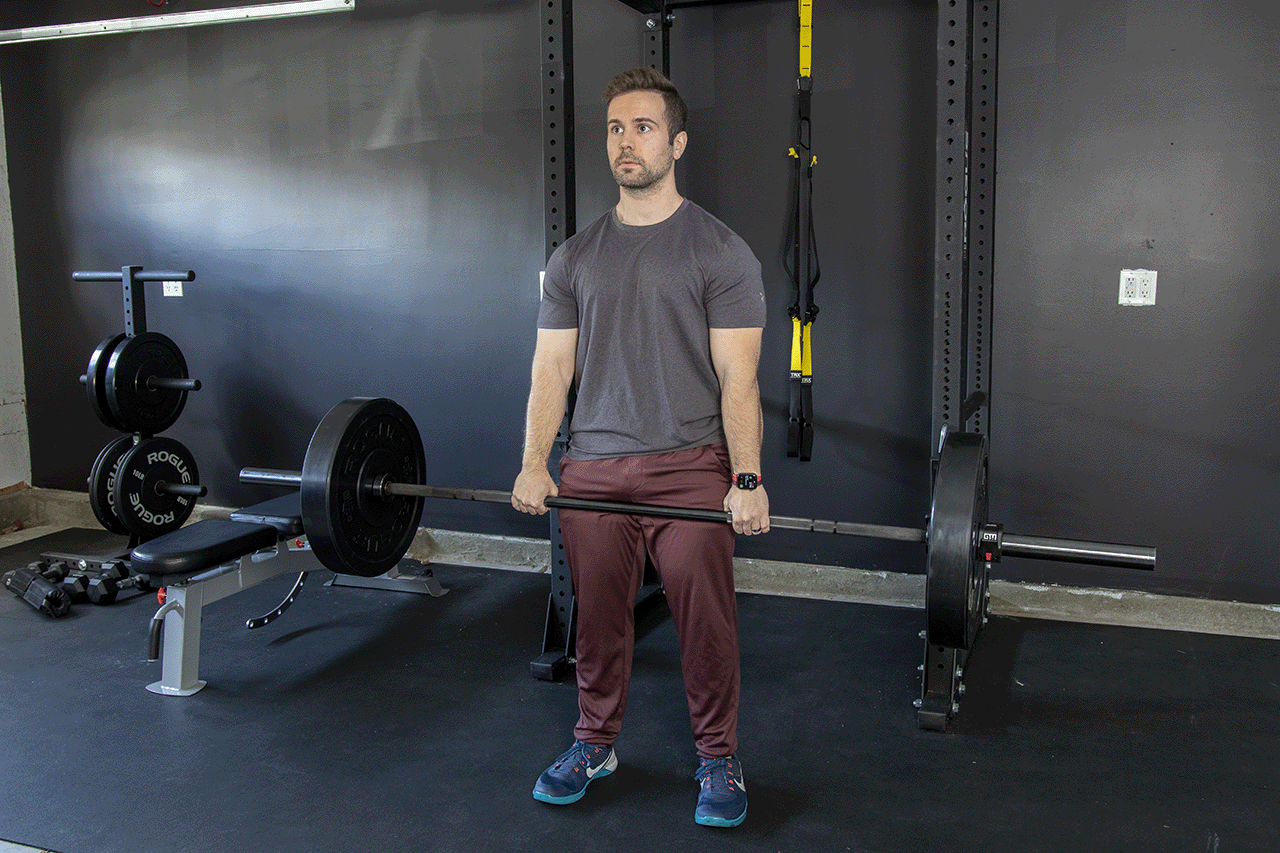
6 Key Components to Performing a Perfect Barbell Deadlift
In my experience (and my opinion), the best way to learn the barbell deadlift exercise is to learn the fundamental mechanics of the exercise.
Understanding these six core components will help you perfect your deadlift technique and translate it into other strength-based exercises.
Below are the six key components you’ll need to learn, understand and apply to perform the barbell deadlift safely (and effectively).
1. Find Your Power Foot Stance
Start by taking a shoulder-width stance in front of the barbell where your shins are roughly 1 inch from the bar.
Coaching Note: A shoulder-width stance or “jump stance” is a natural position of stability and power for most people which makes it a strong visual cue for your deadlift setup.
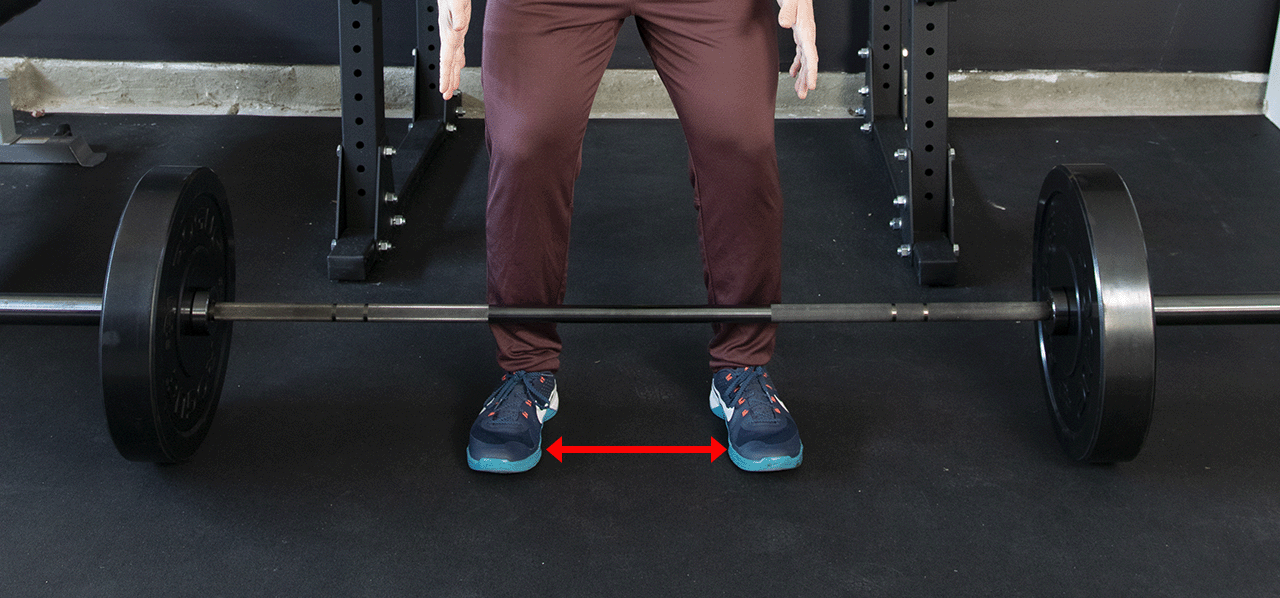
2. Brace Yourself & Create Pressure
Next, take a deep breath inhaling to create internal abdominal pressure that wraps around your abdominal muscles and expands both sides of your ribs.
Coaching Note: Creating pressure throughout your torso & abdominals is key to protecting your spine through this movement. Also, the compression created through proper breathing will help you maintain a stiff neutral spine position.
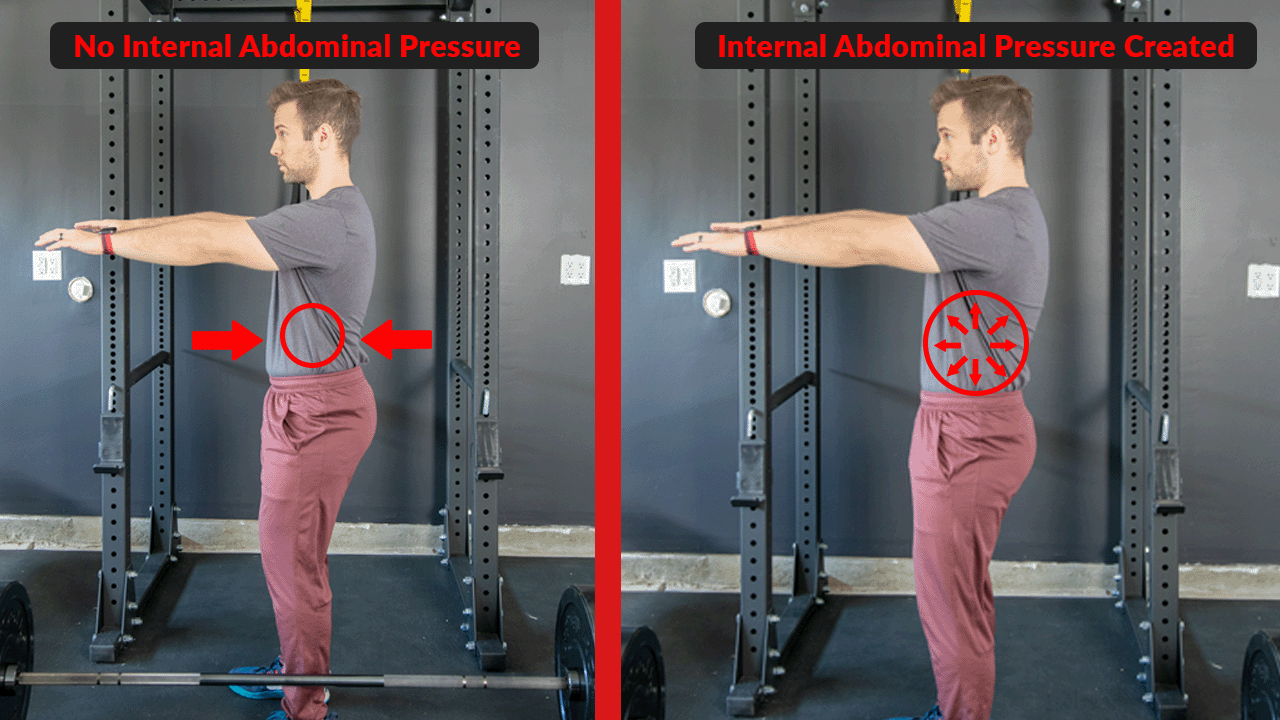
3. Initiate the Hip Hinge
Next, you’ll hinge at the hips (maintaining a stiff neutral spine position) to lower yourself into the bottom (starting) position of the barbell deadlift
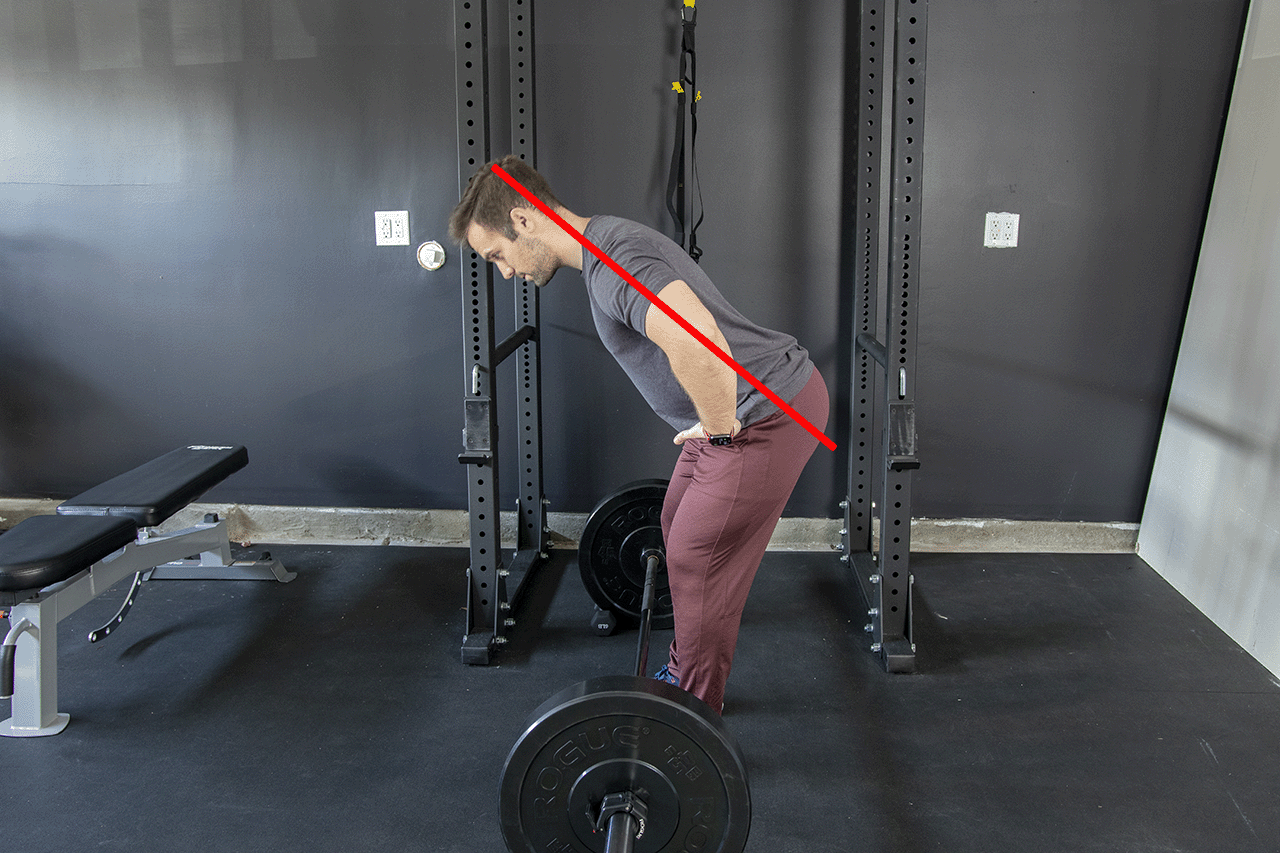
Coaching Note: When you hinge at the hips remember to drive your knees apart to activate your glute medius. The glute medius will help keep your hips stable and increase maximum hip extension throughout the movement.
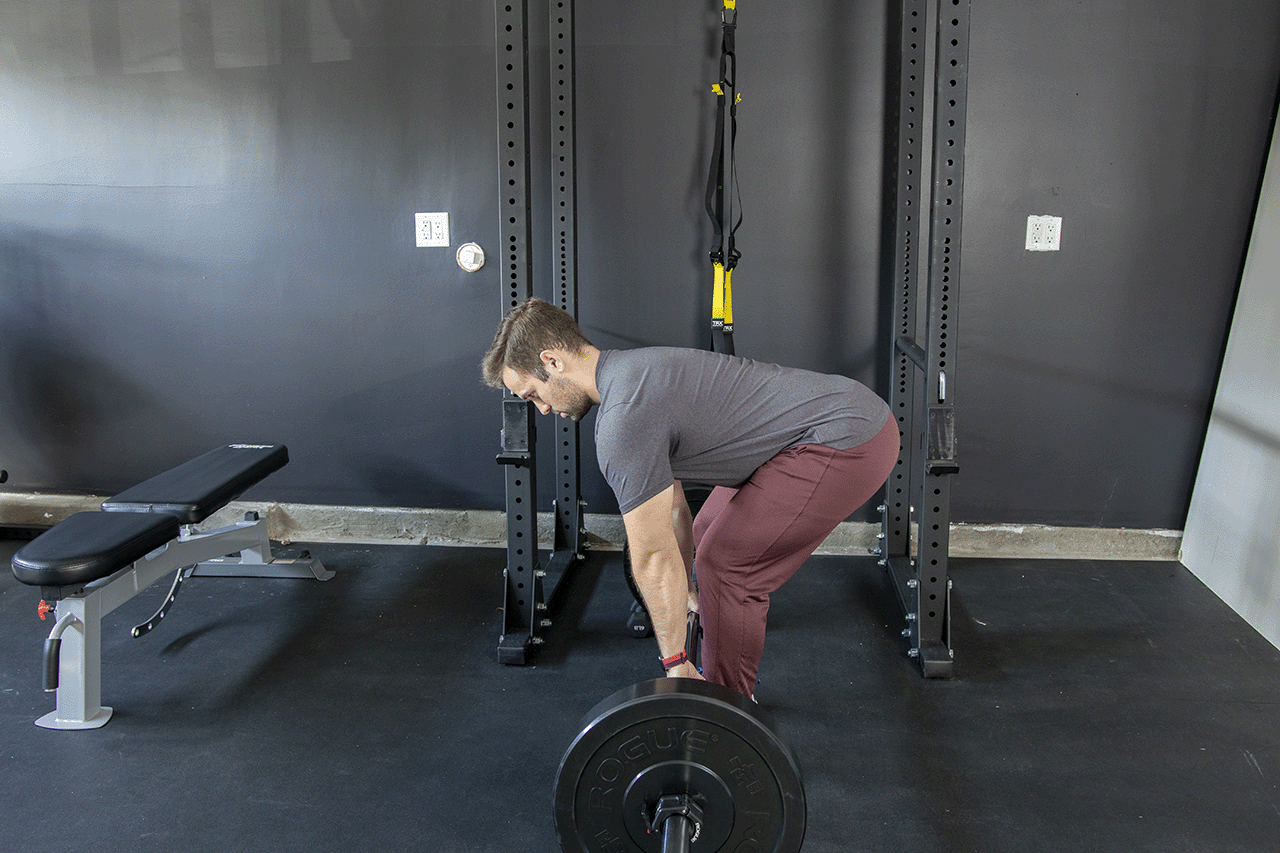
4. Find Your Grip Width
Next, you’ll take a double overhand grip of the barbell. Your hand placement should be just outside of your leg positioning.
Coaching Note: This provides space for your knees and hips to open up on the lowering phase of the exercise.
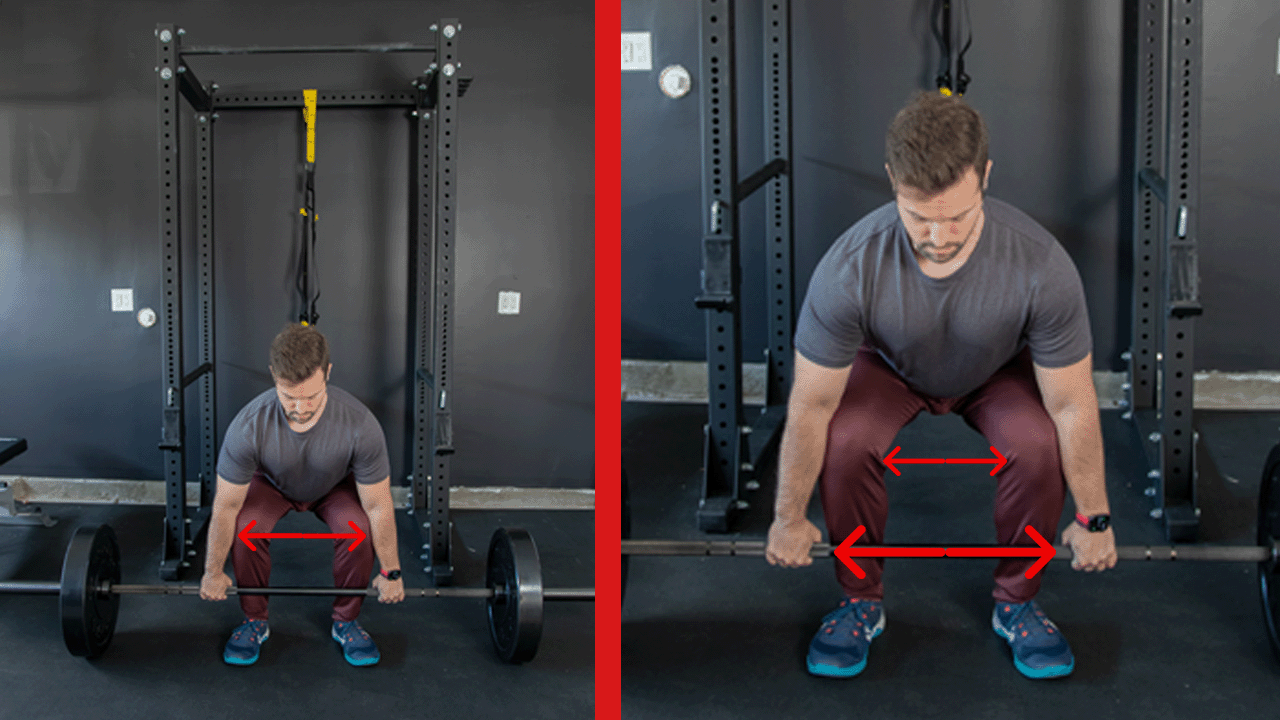
5. Create Tension & Tighten Up
Next, you will engage your lat muscles by pulling your shoulders down and back to create even more tension/stiffness throughout your back.
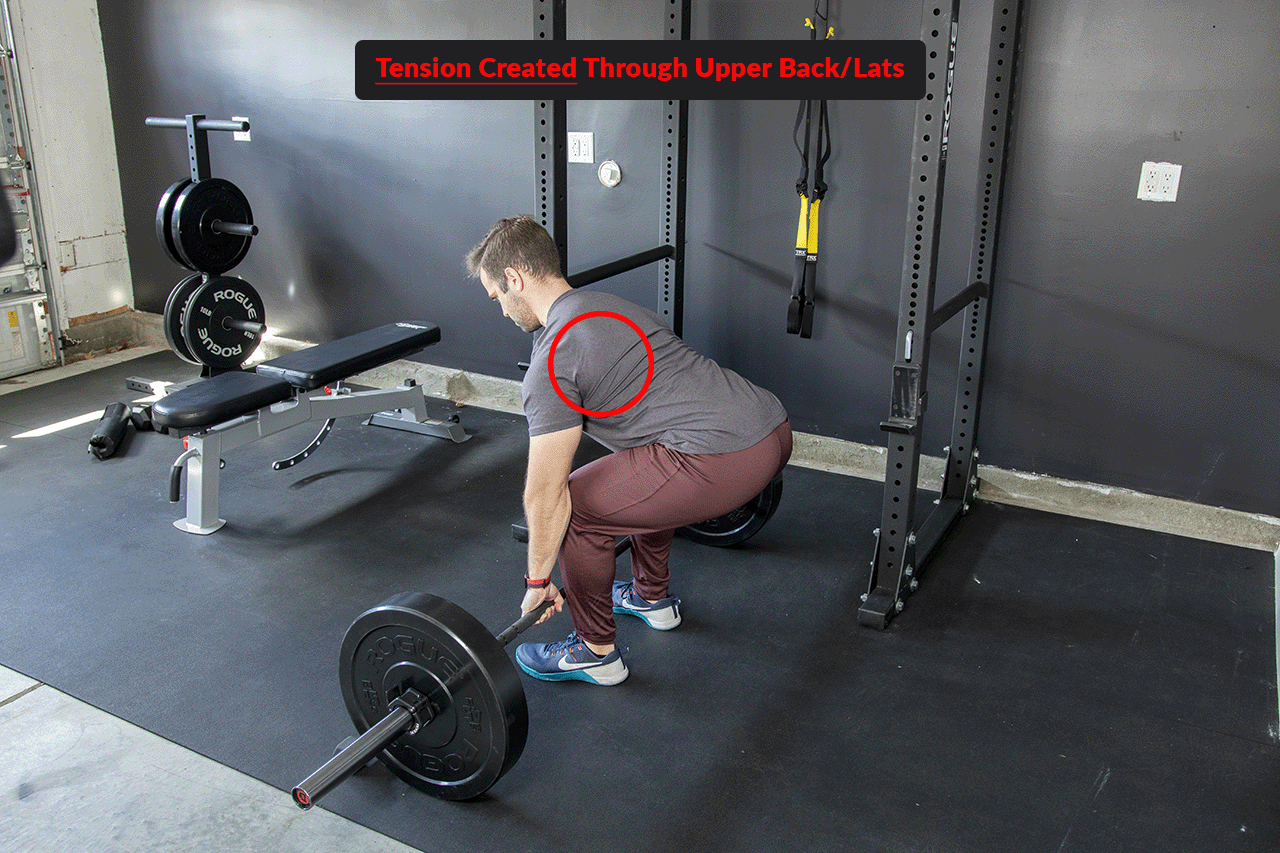
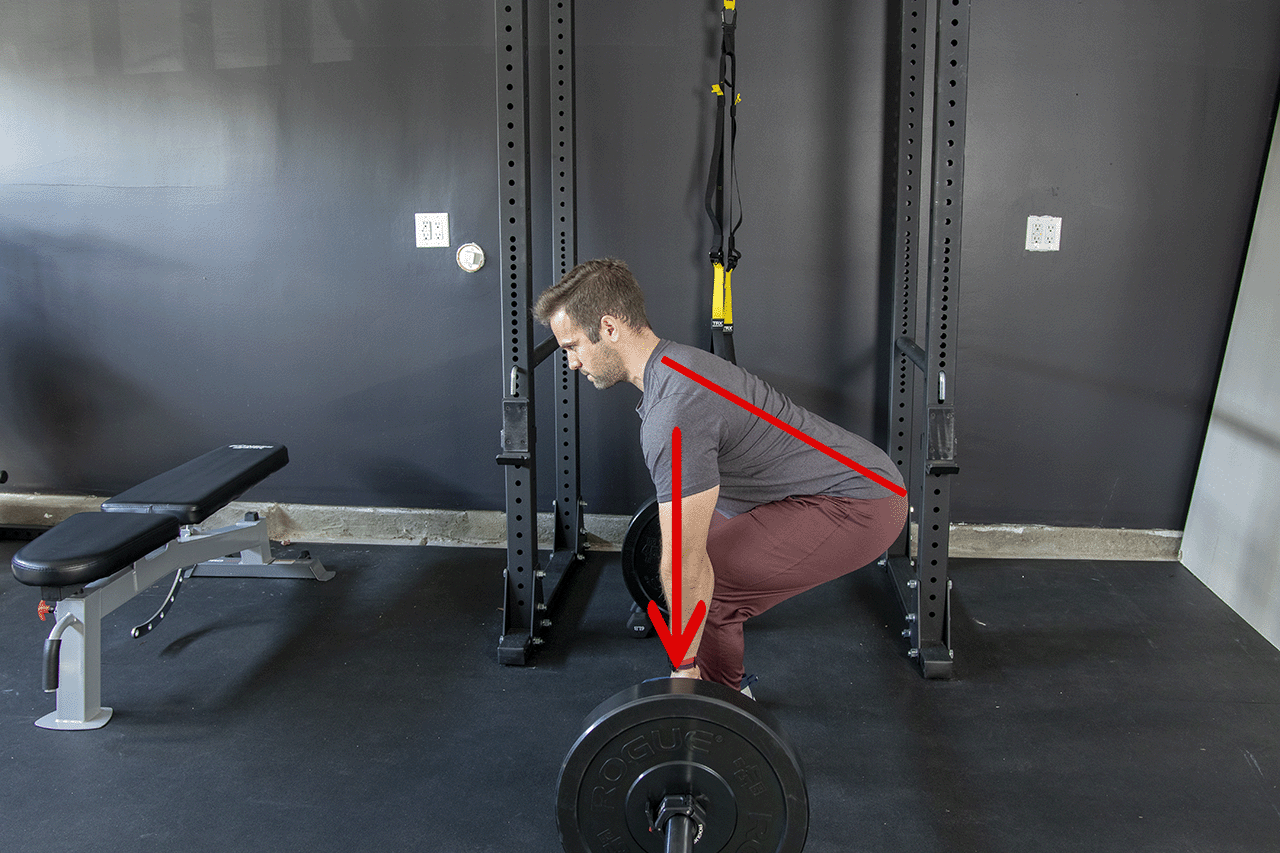
Coaching Note: This will create mild pulling tension on the barbell before it leaves the ground. The front of your shoulders should be directly over the barbell.
6. Executing the Barbell Deadlift
Finally, while maintaining tension, drive your feet into the ground as you stand up.
Once the bar passes knee height, finish the movement by driving your hips forward while keeping your arms close to your body.
Coaching Note: In this position, you’ll feel like you’re ‘wedged’ into the ground from the tension you’ve created. When executing the list you’ll focus on driving your knees out to the side to engage your hips (and keeping your arms long)

Barbell Deadlift Muscles Worked & Their Roles
The deadlift is a functional full-body exercise that strengthens your entire posterior chain, including muscles in your lower back, hamstrings, calves, and glutes.
Additionally, the deadlift exercise translates to everyday tasks and movements you already do.
Below are the different muscle groups that assist you in performing this exercise.
Prime Mover Muscles
- Quads
- Hamstrings
- Gluteus Maximus
Synergist Muscles
- Gluteus Medius
- Spinal Erectors
- Transverse Abdominis (Deep Abdominals)
- Obliques (Lateral Side Abdominals)
- Latissimus Dorsi (Lats)
- Gastrocnemius (Calves)
What are the Benefits of a Barbell Deadlift?
Furthermore, the deadlift exercise has a few notable benefits worth highlighting. Read below so you can see how this exercise has a direct impact on your health & fitness goals.
- Functional Full-Body Movement: The core components of a deadlift are practical: hip hinge, diaphragmatic breathing, and core stabilization are all important movements that translate to everyday tasks you perform.
- Stronger Bones: There have been studies that have shown deadlifts can promote an increase in bone density, as well as, help maintain that increase as you get older
- Injury Avoidance: By learning proper breathing, core pressurization, and stabilization the deadlift teaches you to maintain a strong stable torso (and spine) while exerting intense effort.
Frequently Asked Questions About Barbell Deadlift
Here are some of the most common questions answered after breaking down the fundamentals of the barbell deadlift.
How Does a Beginner Do a Deadlift?
To perform a deadlift as a beginner, start by doing a movement assessment to check your mobility, stability, and body awareness. This will help you identify any limitations that could impact your form. Next, learn the key components of a barbell deadlift, including foot stance, core bracing, hip hinge, grip width, and lat engagement. By practicing these individual components and following the steps outlined in the post, you can master the basic mechanics of the deadlift.
Should I Use a Barbell or Dumbbell for a Deadlift?
The choice between a barbell or dumbbell for deadlifting depends on what you’re looking for in your workout. Barbell deadlifts are more convenient and can handle the weight, but dumbbells provide more exercise variety. Remember that you may need a platform or boxes for proper positioning when using dumbbells.
I personally use and love this Olympic barbell for all my weightlifting needs.
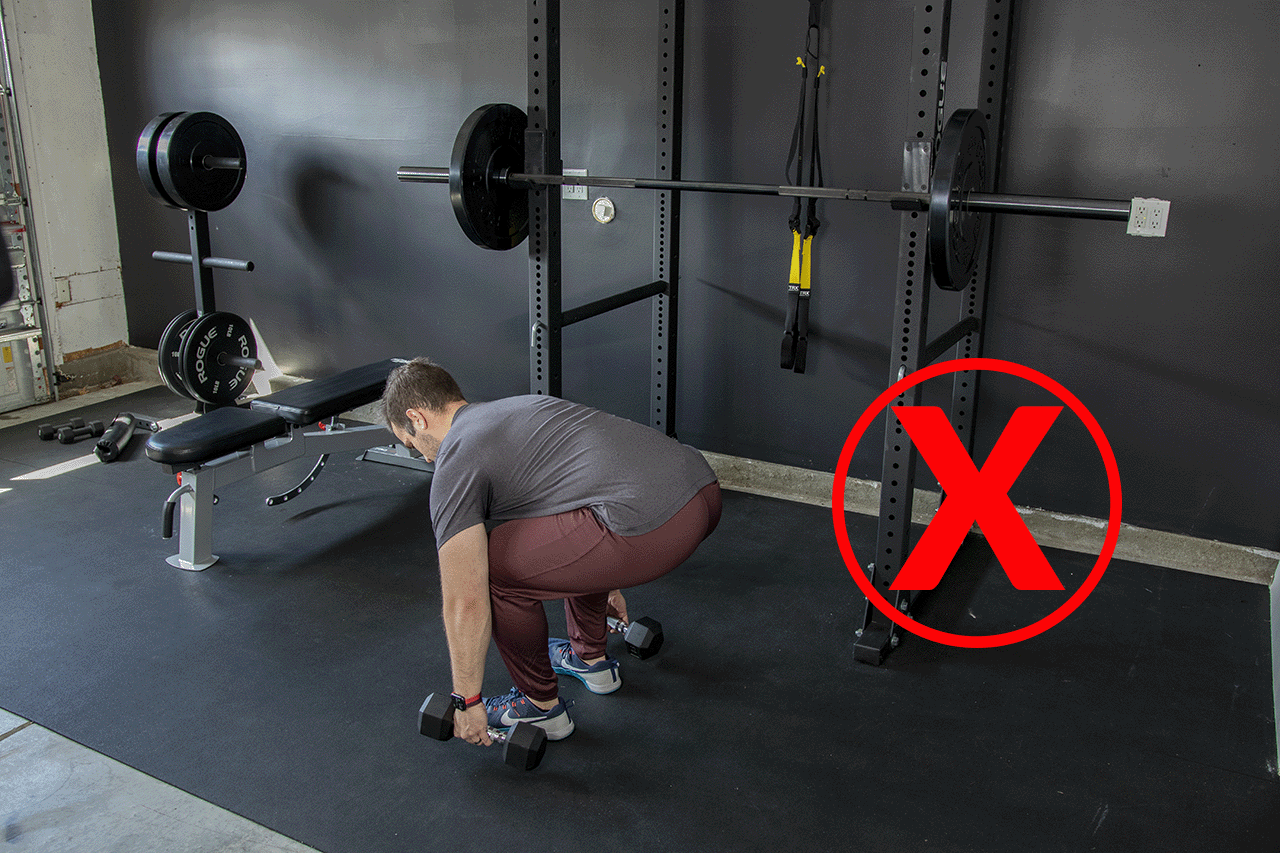
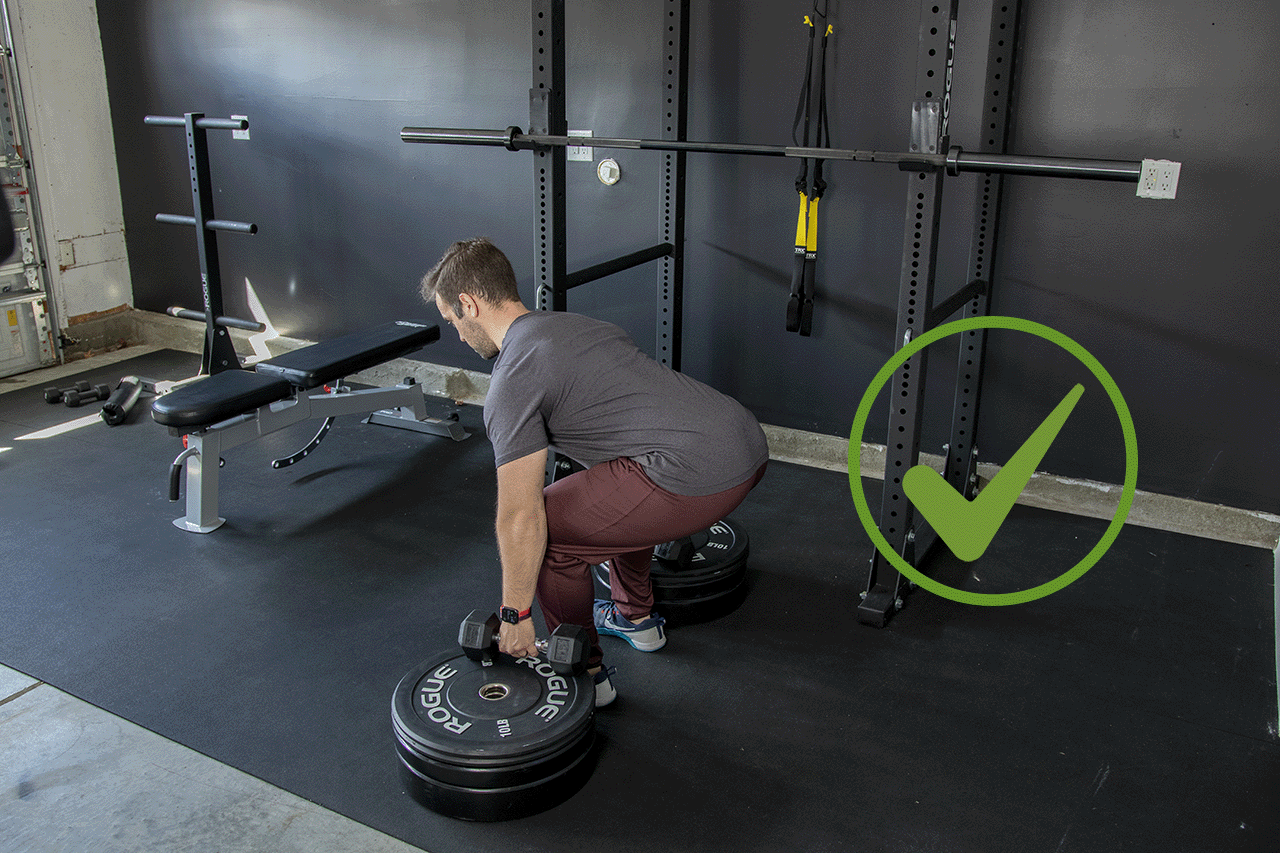
Final Thoughts
The barbell deadlift exercise shouldn’t feel scary or overly complicated to perform. Ultimately, it’s an important functional movement that more people should be incorporating into their workouts routinely.
Don’t stress – put the above principles into practice and you’ll feel a bit more confident each time you approach the barbell.
Want more workout tips? Read this.

